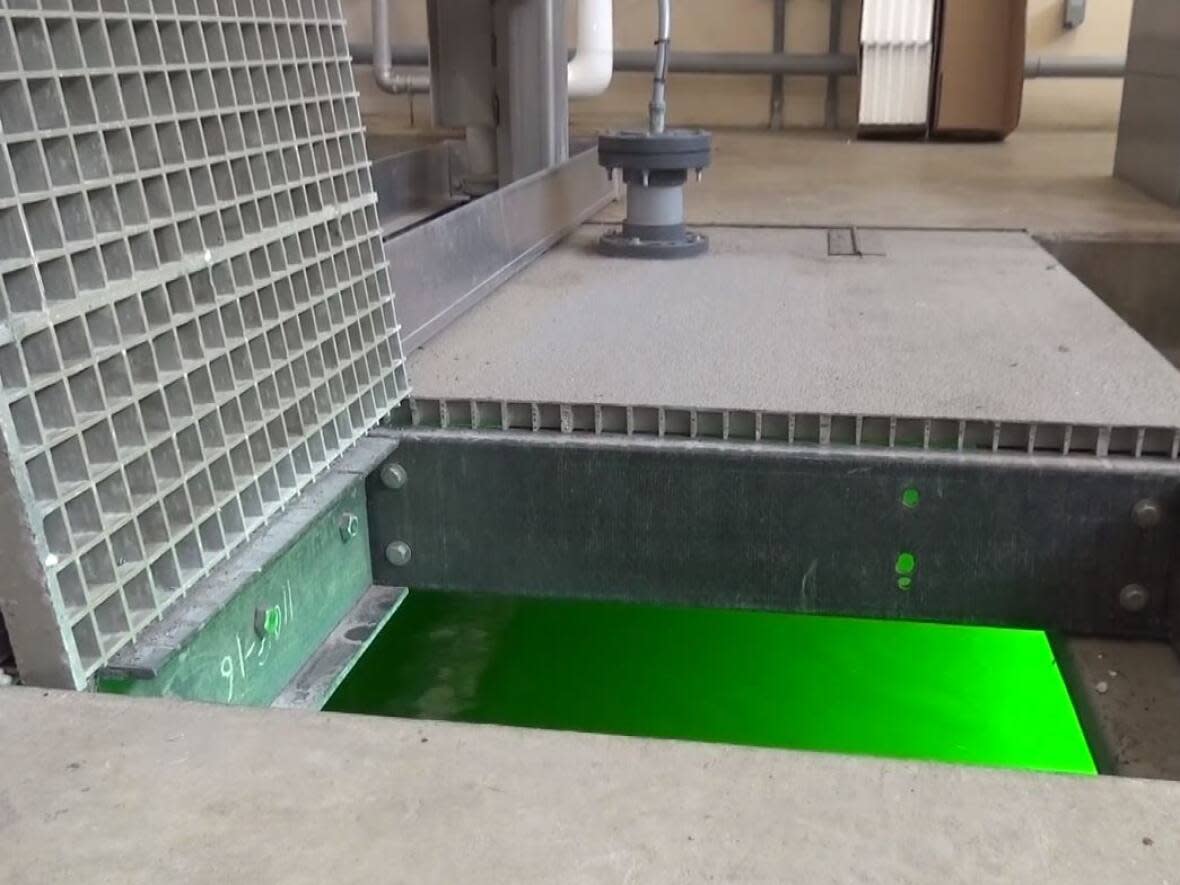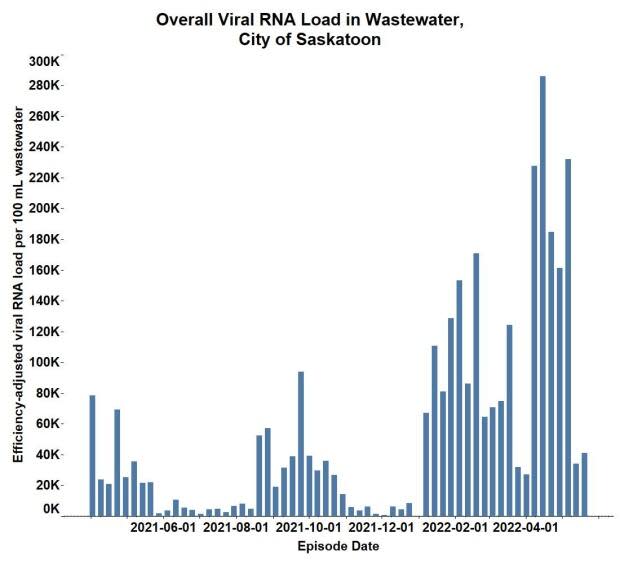Wastewater study indicates COVID-19 levels low in Sask. despite small regional upticks

The ongoing study of wastewater in an effort to track the prevalence of COVID-19 in Saskatchewan's larger communities has recorded among some of the lowest levels of viral load since January, according to the researchers behind it.
The Global Institute for Water Security has been regularly testing wastewater samples in Saskatoon, Prince Albert and North Battleford.
The viral loads in each city are based on an average of three measurements over the week and measure the number of particles, in the tens of thousands, in 100 mL of sewage. The result provides insight into how much virus that causes COVID-19 is in a community — often a cautionary report before a more tangible rise in case numbers and hospitalizations.
In Saskatoon, the viral load increased by about 21 per cent from the week prior but remains as the fourth-lowest record since January.

All of the viral load examined in Saskatoon was determined to be the Omicron BA.2 subvariant, which was first detected earlier this year and has since become the dominant variant in the province.
In Prince Albert, the coronavirus viral load nearly doubled from the week prior. However, it still follows a general declining trend in the city's viral load.
"When the load is small even a few additional infections can have a large percentage increase," John Giesy, principal investigator for the project, said in an email on Sunday.
"Compared to where we were a few weeks ago, we're still at a very low level."
He said not to read into the percentage changes too much, which are relative and don't always show an accurate picture of the current situation.
Like the other cities under wastewater watch, North Battleford has an increase in the wastewater's viral load, but is still showing a fraction of the load it had two weeks prior.
It rose by about 162 per cent of last week's report, but Giesy said "absolute change is still not that [much]."

"[It's] still the third lowest value we've seen in 18 weeks," he said.
The researchers track several lineages of the viruses, and among those identifiable lineages,all of the virus in wastewater was the BA.2 subvariant of Omicron.
But they also found small amounts of other lineages they don't track, less than five per cent in Prince Albert, and less than two per cent in North Battleford.
Giesy said they've sent the data off for those lineages to the National Microbiology Lab to get tested, but said it's likely an Omicron variant, just not one they're tracking. It could be something like BA.3 or BA.4, he said. He estimates there are as many as 40 current Omicron subvariants.
He also said the researchers are working on preparing to track the monkeypox virus in wastewater, which was detected in Canada last week.
So far, he said, there is no entity monitoring wastewater for the virus, but groups are beginning to look into it.
"We're figuring out how to do it but these things are coming at us fast and furious ... but we're working on it," he said.


